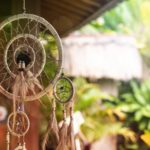In times long past, boundaries were merely an extension of the whim of reigning monarch. As Alexander realized that Macedonia was too small for him, he left with thousands of soldiers, extending his realm as far as Hindustan. And then kings that follow define their own boundaries and order others to observe them. And after that, next come the land owners, investors, angry generals, impassioned writers, minor aristocracy, or dark-skinned slaves –- all of them come along, and – in their own way – define huge movements that change the map of the world.
Every now and then people change maps of the world – usually after some killing, often with some fighting and independent statements. Then boundaries are established, flags are hoisted, immigration officers are posted at the gates, and armies on constant alert make sure that the boundaries are not challenged. Then people print maps with red dotted lines or different colors only to show the different areas.
What’s amazing is the way we can upturn existing maps on the one hand, while on the other we worship maps as sacred objects. Of course boundaries are nothing sacred, or even natural – yet they’ve became an element in human awareness, approached with both respect and familiarity. ‘Native land’, ‘country’; words that have become a sort of magic spell able to conjure up trembling and passion, and even – like the gods in stories – to demand sacrifice.
But, who has decided these boundaries? And who has the right to make them? Most of us have forgotten. Most of us even query them.
Boundaries… they bar the poor of Africa from entering Europe, stop Tibetian to separate from China, and allow Indonesian workers to be chased by Malaysian polices. Above us, a terrifying hole appears in ozone layer. We don’t say this is part of ozone belong to U.S and that one belongs to Iraq, but the boundaries on the map still prevent us from working together to stop the damage.



One Reply to “Beyond Border”
Comments are closed.